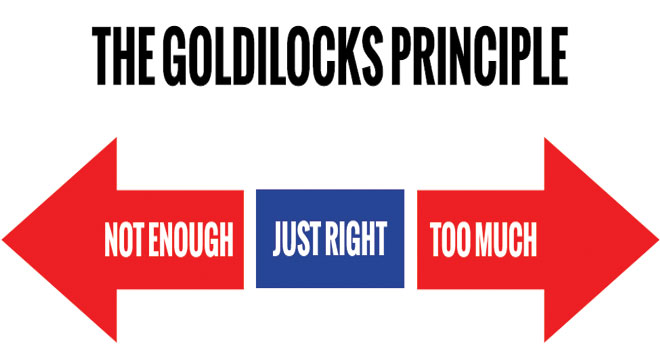A recent article in Thinkadvisor, an American publication for financial advisors, discusses what I believe is a critical concern for us: When is enough too much, or too little? Below are some excerpts from the article.
“Remember the Goldilocks fable? The infamous invader came across porridge that was too hot, porridge that was too cold, and porridge that was just right.
The same dynamic occurs today among advisors and their financial technology. On one hand, many advisors refuse to adapt and adopt even basic digital infrastructure. This kind of advisor won’t be around for long.
On the other hand, many advisors over-tech their businesses hoping they can coast alongside the robots as they do all the work. This overreliance on technology may be sabotaging client relationships without the advisor even knowing it.
A conversation about overreliance on technology started after Tesla’s Autopilot system caused the unfortunate death of a man in Florida last summer. Joshua Brown was driving on a highway at high speed with the Autopilot system deployed and failed to notice the giant semi-truck careening towards him.
For advisors, an overreliance on tech may not be fatal, but may be dangerous to your client relationships. Assuming your tech can do the work of advising your clients is about as smart as assuming all of your prospects want to connect with you on Snapchat.
But, what about the other side of the equation — when the autopilot works better than the pilot?
Here’s a story about another Joshua. Joshua Neally, a 37-year-old attorney, headed home from work early in his Tesla Model X to celebrate his daughter’s fourth birthday. While on the freeway he suffered a pulmonary embolism, an often fatal obstruction of a blood vessel in his lungs, a feeling he described in an interview for Slate as “a steel pole through my chest.” He doesn’t remember much of the drive after that, but his vehicle successfully got him to the closest emergency room, about 20 minutes away. Neally’s car most likely saved his life.
I don’t think most advisors are in the overreliance category. A recent study by PwC found that while 40% of high-net-worth individuals in all markets and age groups use self-directed investment services, only 25% of wealth managers offer digital channels beyond email. That’s staggering.
The 20th annual World Wealth Report (WWR) by Capgemini found that more than half of wealth managers (55%) aren’t fully satisfied with their firm’s digital capabilities. The report revealed that 81% of wealth managers want better digital tools with richer functionality, including increased collaboration with clients (86%), the ability to better leverage client data to identify growth opportunities (82%) and even time savings through reduced paperwork time (82%).
The report also notes that HNW investors’ demand for robo services has shot up nearly 20 percentage points, from 49% in 2015 to 67% in 2016. If that’s true, then the big question is this – are HNW investors going to find client-facing robo technology through you as an advisor, or are they going to find it elsewhere?
Hopefully, they’re looking for a particular kind of self-service opportunity. I’m willing to bet that high-net-worth investors are quite unlikely to put everything in the hands of a robot. They need a human to have their back. What they want is great technology, paired with an efficient advisor giving them intelligent advice.
As for the man whose life was saved by Tesla’s Autopilot, “I’m not a daredevil,” Neally told Slate. “I promised my wife I’d always be paying attention.” Maybe that’s the key. Advisors are at their best when they’re simply paying attention. Advisors can utilize technology to put some of the hassles of their business on “autopilot” without becoming ignorant. If an advisor’s tool belt helps them maximize their business and remain focused on their clients, maybe that’s the amount of technology that’s just right.



